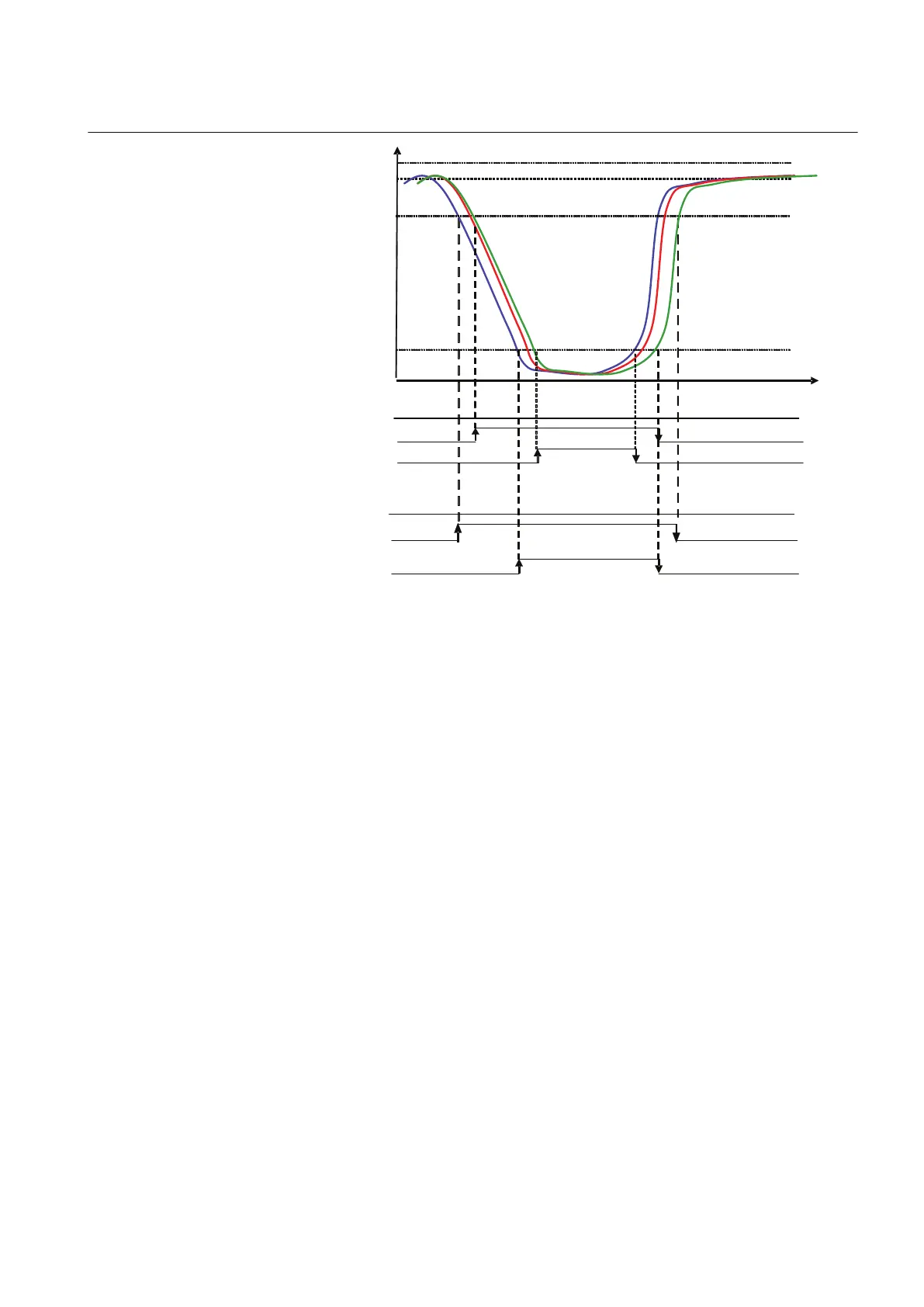U_A
U_C
U_B
DIPST
INTST
SWELLST
Voltage Int set
Voltage dip set
Voltage swell set
FALSE
TRUE
FALSE
TRUE
FALSE
TRUE
DIPST
INTST
SWELLST
FALSE
TRUE
FALSE
TRUE
FALSE
TRUE
A) Three phase mode
B) Single phase mode
GUID-F44C8E6E-9354-44E4-9B2E-600D66B76C1A V1 EN
Figure 414: Detection of three-phase voltage interruption
The module measures voltage variation magnitude on each phase separately, that
is, there are phase-segregated outputs ST_A, ST_B and ST_C for voltage variation
indication. The configuration parameter Phase supervision defines which voltage
phase or phases are monitored. If a voltage phase is selected to be monitored, the
function assumes it to be connected to a voltage measurement channel. In other
words, if an unconnected phase is monitored, the function falsely detects a voltage
interruption in that phase.
The maximum magnitude and depth are defined as percentage values calculated
from the difference between the reference and the measured voltage. For example,
a dip to 70 percent means that the minimum voltage dip magnitude variation is 70
percent of the reference voltage amplitude.
The activation of the BLOCK input resets the function and outputs.
10.3.4.3 Variation validation
The validation criterion for voltage variation is that the measured total variation
duration is between the set minimum and maximum durations (Either one of VVa
dip time 1, VVa swell time 1 or VVa Int time 1, depending on the variation type, and
VVa Dur Max). The maximum variation duration setting is the same for all
variation types.
1YHT530004D05 D Section 10
Power quality measurement functions
615 series 775
Technical Manual
